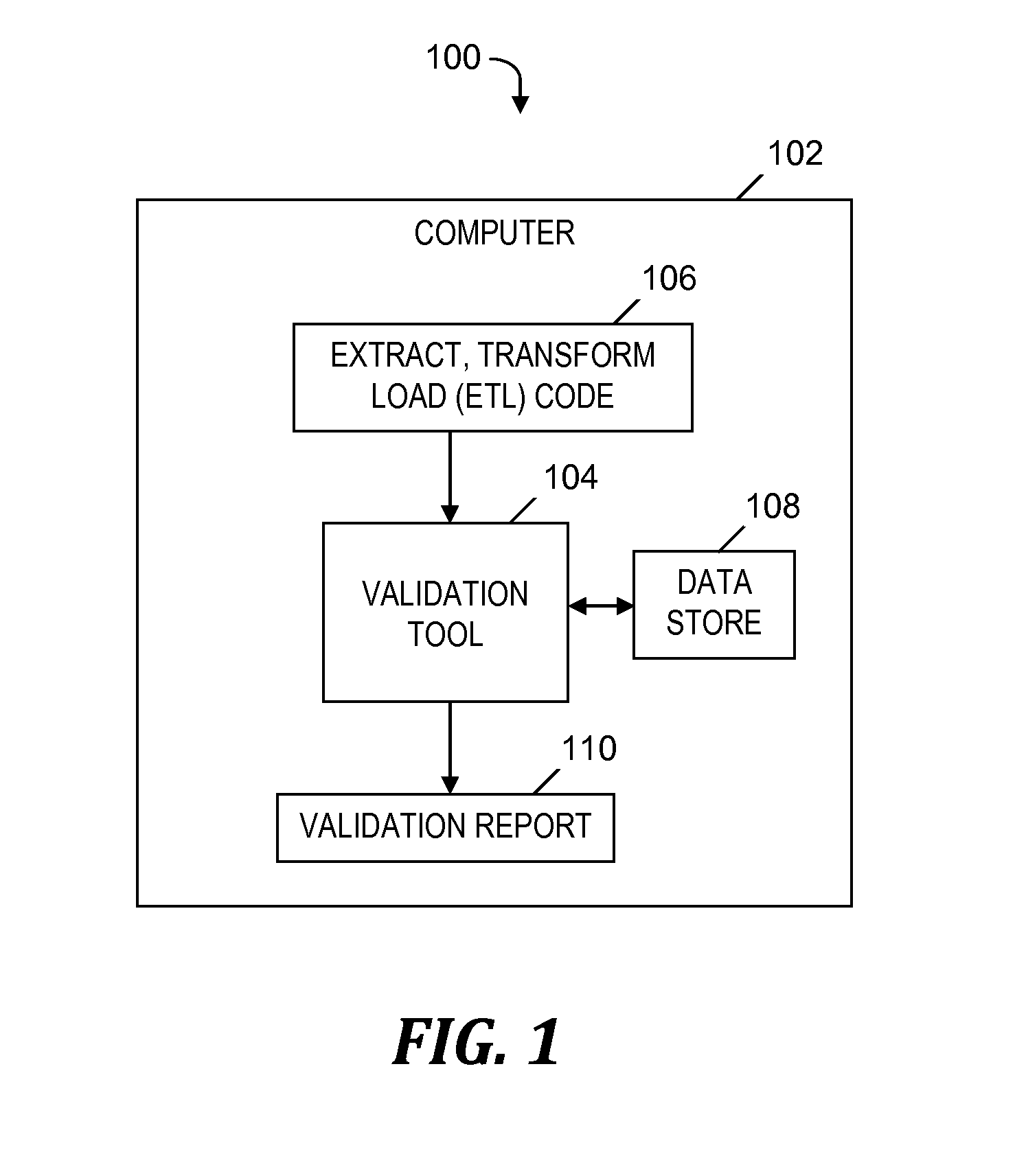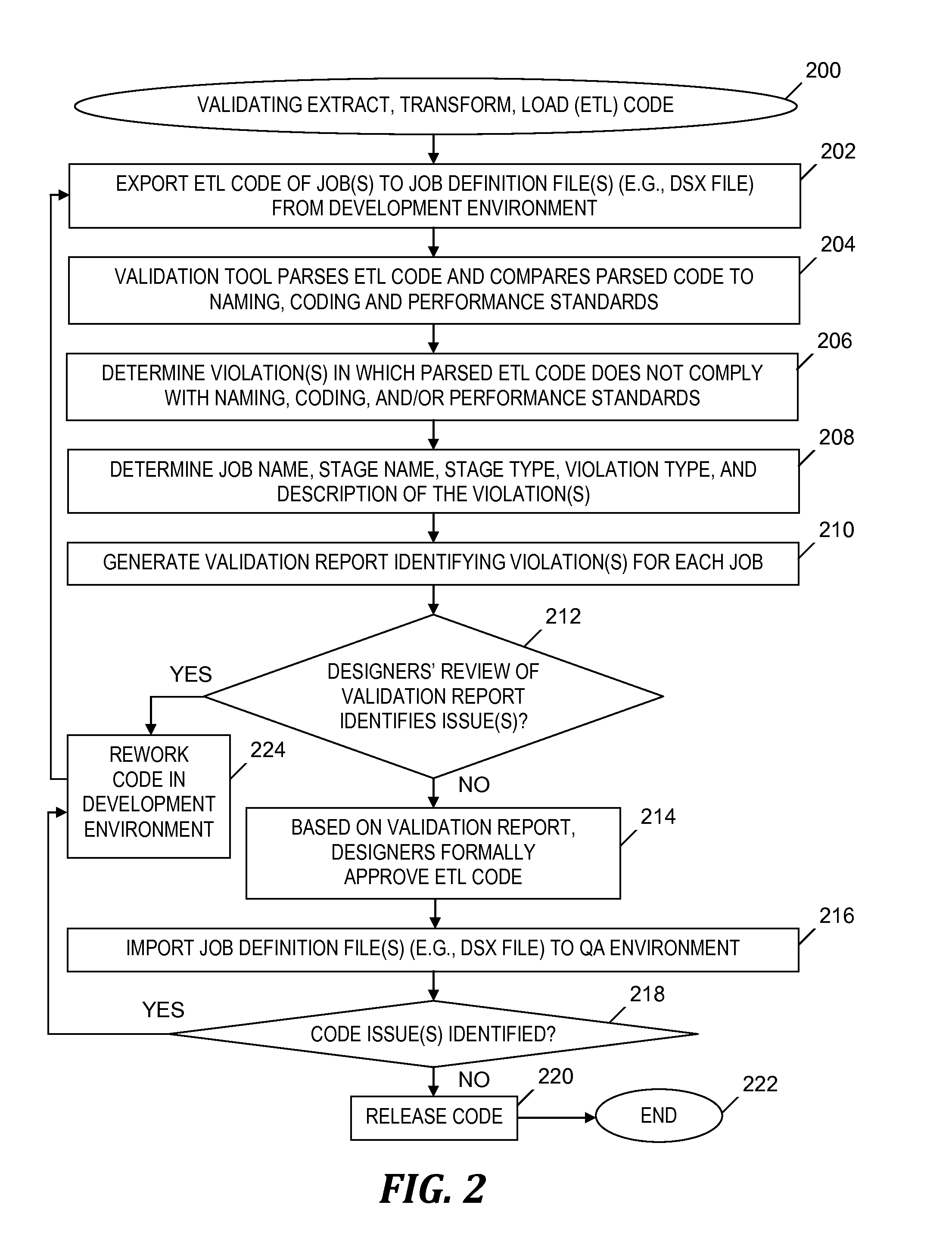Validating code of an extract, transform and load (ETL) tool
a technology of extracting transform and loading, applied in the field of validating etl code, can solve the problems of software developers, low quality coding, large number of jobs and other objects, etc., and achieve the effect of facilitating high quality, less time, and effective review of cod
- Summary
- Abstract
- Description
- Claims
- Application Information
AI Technical Summary
Benefits of technology
Problems solved by technology
Method used
Image
Examples
examples
[0059]FIG. 3 depicts an exemplary portion 300 of validation report 110 (see FIG. 1) summarizing violations of standards determined by the process of FIG. 2, where the report is generated by the system of FIG. 1, in accordance with embodiments of the present invention. Portion 300 includes a section 302 including a list of parallel jobs and a section 304 including a list of sequence jobs, which are determined by validation tool 104 (see FIG. 1).
[0060]Section 302 includes object-specific information for each job, including a job name, aggregator count, transformer count, re-partitioning count, sort count, annotation count, database read / write count, file read / write count, hardcoding count (i.e., count of the number of instances of hardcoding for each job), and standards violation count.
[0061]For example, for the second row of data in section 302, the job name is AIE001WriteSAPFile, the aggregator count is 8, the transformer count is 6, the re-partitioning count is 6, the sort count is...
PUM
 Login to View More
Login to View More Abstract
Description
Claims
Application Information
 Login to View More
Login to View More - R&D
- Intellectual Property
- Life Sciences
- Materials
- Tech Scout
- Unparalleled Data Quality
- Higher Quality Content
- 60% Fewer Hallucinations
Browse by: Latest US Patents, China's latest patents, Technical Efficacy Thesaurus, Application Domain, Technology Topic, Popular Technical Reports.
© 2025 PatSnap. All rights reserved.Legal|Privacy policy|Modern Slavery Act Transparency Statement|Sitemap|About US| Contact US: help@patsnap.com



